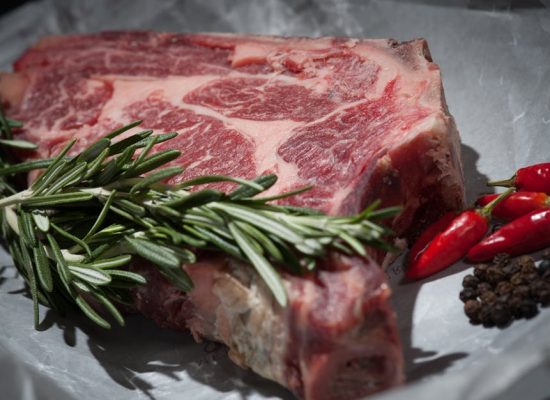Latest Posts
Congratulations to Dr. Adam Hall from #noosamove on completing his first #uta50 last week in fine form. Fantastic performance!
Well done to all #centrednutritionau clients who attempted the #ultratrailaustralia race under very testing conditions. ... See MoreSee Less
This content isn't available at the moment
When this happens, it's usually because the owner only shared it with a small group of people, changed who can see it, or it's been deleted.Excitied to be talking with Jase and Alex tomorrow @ #infinithq ... See MoreSee Less
This content isn't available at the moment
When this happens, it's usually because the owner only shared it with a small group of people, changed who can see it, or it's been deleted.New Oats?
With winter finally here in SE QLD I broke out the oats this morning. This relatively (<12months) new one caught my attention a while back and today was the day. It claims 11g protein per serve with low sugar. Energy per serve is 740kJ (177kcal). My serving size was 2 sachet's on soy with a banana. Yours maybe less or more depending on requirements.
Pros: tastes pretty good, convenient/fast breakfast option in the microwave, particularly with added protein/other wholegrains, love the line on the sachet idea for measuring milk or water.
Cons: instant will never be as good as real oats (In my book if you know how to cook them), more expensive option, not gluten free (due to added grains) for those with coeliac disease.
Verdict: Would eat again, super convenient post training option.
#oats #centrednutritionau #sportsdietaust #breakfast ... See MoreSee Less
Thanks again to the team at Infinit Nutrition Australia for advocating the role of sports dietitians 👍 ... See MoreSee Less
This content isn't available at the moment
When this happens, it's usually because the owner only shared it with a small group of people, changed who can see it, or it's been deleted.Using up your veg:
The current situation allows us to focus on reducing food waste, and save a few dollars at the same time.
Last night I experimented with a Morrocan-style Cottage Vegetable Pie. Thinking outside the box I wanted to ensure adequate protein in this one. Ingredients were: stir-fried onion, carrot, parsley, garlic, 3Tbs Moroccan spice, 1Tbs smoked paprika, 500g super fine diced tofu, leftover baby spinach/mushrooms, a bag of frozen cauliflower, 1 tin of lentils, 1 tin of tomato and some added water. While this was cooking I boiled some potato/sweet potato, mashed and stirred in some olive oil and egg yolk before pasting this on the top of the mix (cottaged it), in an oven proof dish. Before sprinkling with some cheese to cook for 20mins at 180deg C.
Repeating this again, I'd probably add less liquid and mix half of the cheese in with the veg.
The tofu: like I tell clients: it really doesn't taste like much and in this dish you don't notice it. Ticks for protein, carbs and vegetables (just use whatever veg you have).
Fun fact1: tofu has ~10g protein per 80g.
Fun fact2: this meal has more FODMAPS than you can poke a stick at: great for gut health, not so good for IBS sufferers
#centrednutritionau #vegetablepie #cottagedit #sportsdietaust #covid19meal #highfodmap ... See MoreSee Less
Blog Posts
Centred Nutrition: Peter Herzig Dietetics and Sports Nutrition is with John Freiberg.
Power to weight ratio: is it really so important?
As a Sports Dietitian I am often asked about maximising power to weight. Power (the amount of work completed in a certain time) to weight or watts per kilogram is a measure that allows us to compare individuals or improvements following training in (particularly) cycling performance. Though we need to know what power we are talking about: is it the maximum power you can sprint at, your functional threshold power (FTP) or power for the duration of an IM bike leg? Andy Coggan has a nice article on Power Profiling on TrainingPeaks if you want more information.
Why is it important?
Bragging rights between you and your training buddies of course… Power to weight in cycling has traditionally been used to compare the abilities of climbers. When the gradient increases, power to weight becomes more important as we are working harder against gravity. Thus heavier riders need to produce more power to keep up. It is also beneficial to have a higher power to weight ratio if your sport depends on accelerating, decelerating or changing direction quickly (I know engineers, they are all forms of acceleration).
Why isn’t it important?
I hear you; you don’t participate in hilly road cycling and you aren’t planning on doing Embrun Man anytime soon. While power to weight is important up a hill, on a flat course it makes much less difference. For two riders: Mike (80kg and FTP 300W or 3.75W/kg) can average 37.3kph* on the flat, while Amanda (60kg and FTP 250W or 4.2W/kg) can only manage 36.9kph* (*theoretically). Even though Amanda’s power to weight is greater, it is Mike’s greater power (300W) that is more important.
But what about aerodynamics, doesn’t a bigger body push more air?
Yes that is true, in fact overcoming aerodynamic resistance is responsible for 90% of the energy used in a time trial over 40kph. Though Amanda’s lower drag isn’t enough to counteract her lower power compared to Mike. A more recent study showed just this in the real world: the best predictor of time trial performance was average power during a time trial normalised to a cyclist’s drag area (Peterman et al, 2015). Or more basically: better performances were those individuals that could produce more power in an aerodynamic position.
Considerations when maximising power to weight.
For most athletes it is more important to maximise training gains (power), focus on fuelling during training and competition and healthy eating for recovery. For those who have ticked all the boxes, then you may benefit from some fat loss (improved power to weight), particularly if riding over hilly terrain or involving acceleration. Though we then need to make sure that you actually have some body fat to lose and can do so safely. I would always recommend discussing any weight loss goals with your coach to make sure it fits in with your training plan. A sports dietitian can work with you to map out a realistic, individually structured plan for you to maximise training adaptions and potentially power to weight.
Peterman, J. E., Lim, A. C., Ignatz, R. I., Edwards, A. G., & Byrnes, W. C. (2015). Field-measured drag area is a key correlate of level cycling time trial performance. PeerJ, 3, e1144. doi: 10.7717/peerj.1144
Peter Herzig (AccSD, APD) … See MoreSee Less
Ketogenic or Low Carb High Fat (LCHF): Is it appropriate for your sport?
The concept of LCHF has been explored in waves over the past 50 years and has recently jumped back into life via expert opinion, social media and anecdotal evidence. The focus of the current LCHF movement involves limiting carbs to <30g or <50g per day and providing 75-80% energy from fat. Consuming these levels of fat usually requires a diet based on a significant amount of cheese, cream, nuts, ‘grass-fed’ meat fat, nuts and oils. With the aim of this diet being to increase ketone levels to achieve “ketosis” (not to be confused with ketoacidosis). Hence the ‘keto diet’ or ‘ketogenic diet’.
There is no question that by following a LCHF diet you will be able, in as short as 5 days, to burn more energy from fat in your muscles. Sounds good so far. Within three weeks you can achieve ketosis and reduce reliance on carbohydrate for fuel. However, the ability to perform high intensity exercise is compromised by not having the stores of carbohydrate or the ability to readily access it. Furthermore, the body is more efficient at burning glucose than other energy sources. Based on recent research, your perceived effort will increase for a given high intensity workload on a LCHF diet, meaning that it will feel like you are working harder to perform at the same level.
You may be thinking that most of your exercise is at lower intensities, however anytime we call upon a higher intensity: be it running up a hill, accelerating out of a turn or performing multiple reps, we will call upon higher energy states. If you were performing ultra-distance exercise at sub-maximal intensities or where access to carbs or any food is an issue, then a LCHF approach may be of benefit to you. Though the long term health effects by following such a diet are unknown.
For most sports, there is no question that carbohydrate intake, individually prescribed will facilitate faster times, better training responses and less effort at higher intensities. While it is easy to get caught up with the hype of trying something new, sometimes we need to step back and look at the evidence. For more information or to discuss eating around training, consult with a Sports Dietitian.
Peter Herzig (AccSD, APD) … See MoreSee Less
Ketogenic or Low Carb High Fat (LCHF): is it appropriate for your sport?
The concept of LCHF has been explored in waves over the past 50 years and has recently jumped back into life via expert opinion, social media and anecdotal evidence. The focus of the current LCHF movement involves limiting carbs to <30g or <50g per day and providing 75-80% energy from fat. Consuming these levels of […]

